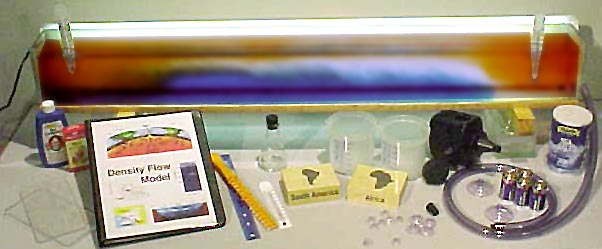

"Demonstrations are like gravity. They pull us
down to Earth, away from the lofty clouds of the purely formal...
breathing life into our equations...giving them substance and
validity...requiring only brief moments of time they serve our quest
for didactic clarity...with a flip of a switch or a sleight of the
hand, they induce the gasp of our audience...physical laws become
real and unintimidating...intrenching themselves in the spectator's
memory...reminding them of the power of pure thought transformed into
concrete, functioning reality...they can seduce and delight...they
induce an insatiable curiosity to explore...to ask...to
inquire...into that subtle but understandable entity we call
Nature."
- Lee Carlson
Introduction
The Earth is restless and alive with change. Its crust is in a
never-ending cycle of destruction and renewal. Oceans of air and
water are forever in motion, transporting vast amounts of energy and
materials from one part of our planet to another. Many Earth
processes, such as volcanism, weather systems, ocean circulation and
plate tectonics involve the movement of fluids due to variations in
density. If we, as educators, hope to instill in our students an
appreciation for the awesome forces in nature, we must first teach
them the basic principles involved.
In science, there are many concepts and phenomena that are hard to visualize and understand. The concept of density is often very difficult for many students to comprehend. The Density Flow Model, with its illuminated fluid movements, makes learning the density concept less abstract. The accompanying study guides encourage students to become actively engaged through the use of thought-provoking activities that employ scientific thinking strategies. Each activity is followed by challenging application questions that are related to real-life situations, making the experience both practical and meaningful.
The Density Flow Model has been designed to complement grade 6 -12 Earth Science, Physical Science, General Science or Integrated Science curriculum.
Materials List (items displayed above)